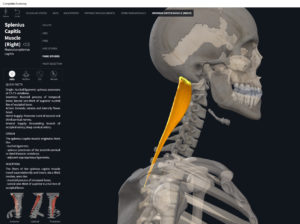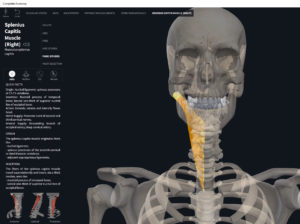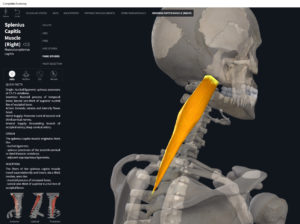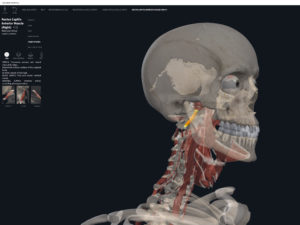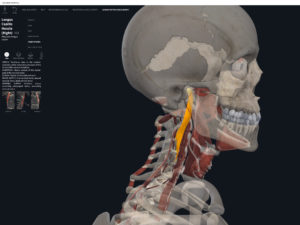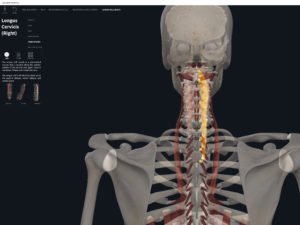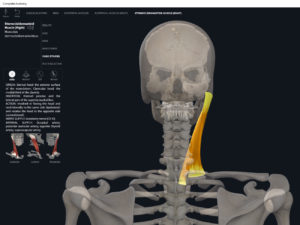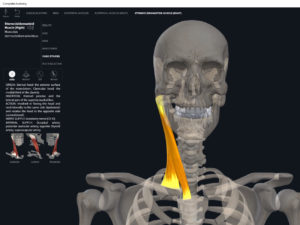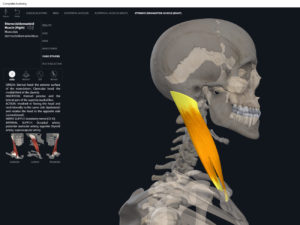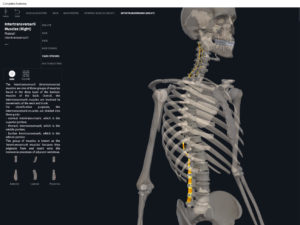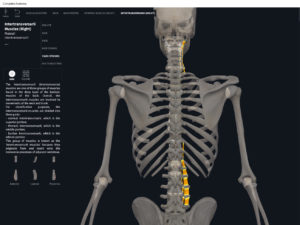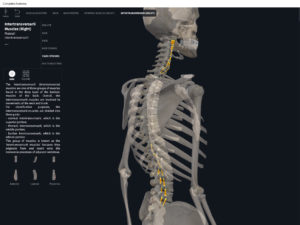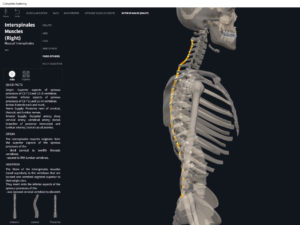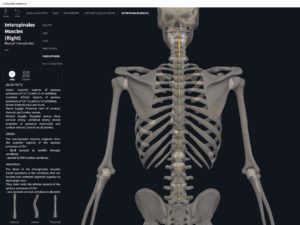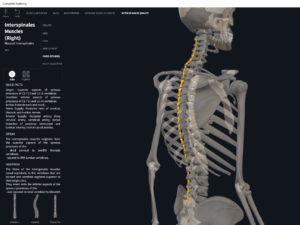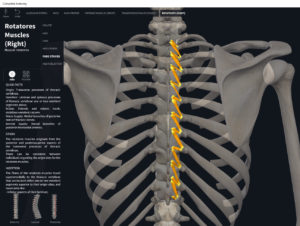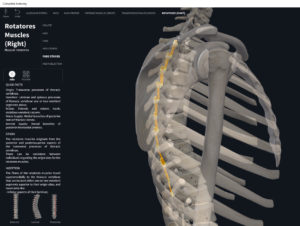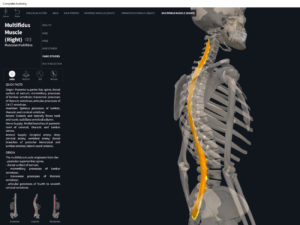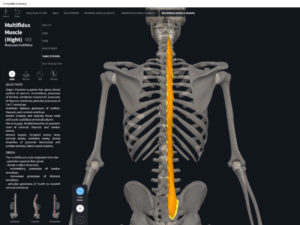Anatomy & Physiology: Muscles—Splenius Capitis.
Structure.
- Origin: ligamentum nuchae and spinous processes of C7-T4.
- Insertion: occipital and mastoid process.
Function.
- Concentric action: extend head and neck; laterally flex and rotate head to same side as contracting muscle.
- Reverse mover action: cervical and thoracic spinal extension; lateral flexion of lower cervical and upper thoracic spine; contralateral rotation of lower cervical and upper thoracic spine.
- Eccentric action: controls/restrains/slows flexion, contralateral lateral flexion, contralateral rotation of head and neck.
- Isometric action: stabilize head and neck.
- Innervation: middle cervical spinal nerves.
- Arterial supply: occipital artery.
Clinical Significance.
References
Biel, A. (2015). Trail guide to the body: A hands-on guide to locating muscles, bones and more.
Cedars-Sinai. (2018). Vertebrae of the spine. Retrieved from https://www.cedars-sinai.org/health-library/diseases-and-conditions/v/vertebrae-of-the-spine.html
Clark, M., Lucett, S., Sutton, B. G., & National Academy of Sports Medicine. (2014). NASM essentials of corrective exercise training. Burlington, MA: Jones & Bartlett Learning.
Jenkins, G., & Tortora, G. J. (2012). Anatomy and Physiology: From Science to Life, 3rd Edition International Stu. John Wiley & Sons.
Muscolino, J. E. (2017). The muscular system manual: The skeletal muscles of the human body.
